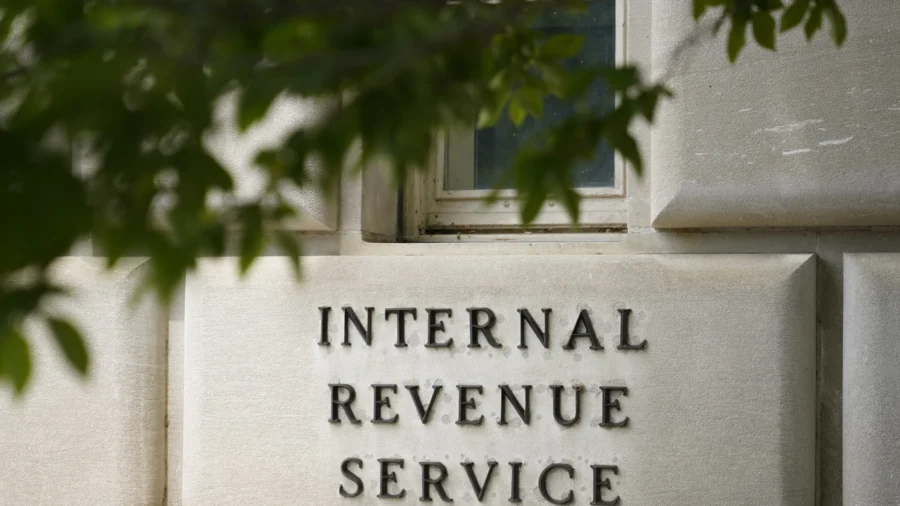The Internal Revenue Service (IRS) raised the contribution limit to a key employee health care account while also increasing the amount of money that can be carried over to the next year.
Flexible Spending Arrangement (FSA) is a type of savings account that employees can use to pay for medical expenses. The contributions come from the wages of employees. “For 2024, there is a $150 increase to the contribution limit for these accounts,” the IRS said in a Dec. 8 press release. “An employee who chooses to participate in an FSA can contribute up to $3,200 through payroll deductions during the 2024 plan year. Amounts contributed are not subject to federal income tax, Social Security tax, or Medicare tax.” For 2023, the contribution limit was $3,050.
For couples, they can jointly contribute up to $6,400 for their household. If the plan allows it, the employer can also contribute towards the employee’s FSA.
FSAs can be used to meet expenses like copayments, prescription medications, menstrual products, dental care, and over-the-counter drugs that may not be covered by an employee’s health plans.
A key thing about FSAs is that the amount in the account will expire by the end of that year. Only a small portion is allowed to be carried to the next year. Individuals risk losing the remaining portion of their saved funds. Some employers can provide a grace period of 2.5 months in the following year for an individual to use up all the funds.
However, the risk of losing the saved funds means that people have to carefully plan out their non-insured health care expenses annually and limit contributions to this extent.
For 2023, the maximum amount that can be carried over to 2024 is $610. In 2024, this rises slightly to $640. The IRS advises people to consider the following when budgeting their expected FSA health care expenses:
- Necessary supplies for the medicine cabinet.
- Big ticket medical expenses.
- Routine checkups or visits to specialists that are not covered by insurance plans.
- Eye exams or dental visits.
- Seasonal purchases of items like allergy products, warm steam vaporizers, and sunscreen.
An FSA account can be used for the following expenses: cold and flu medicine, insulin, crutches, blood sugar testing supplies, reading glasses, bandages, pain relief medication, chiropractors, breast pumps, psychological treatment, and pregnancy tests.
“It’s important for taxpayers to annually review their health care selections during health care open enrollment season and maximize their savings,” the IRS said.
“Eligible employees of companies that offer a health flexible spending arrangement (FSA) need to act before their medical plan year begins to take advantage of an FSA during 2024. Self-employed individuals are not eligible.”
FSA Accounts
There are five types of FSAs a person can choose from with the most common type being a health care FSA (health FSA or medical FSA). This is the FSA that individuals use to pay for their non-insured health care expenses.
A limited-purpose FSA allows people to only pay for qualified dental and vision care costs.
Meanwhile, a dependent care FSA or a child care FSA allows employees to pay for dependent care services that arise from their employment. This includes the costs of nursery, babysitting, preschool, and nannies. These accounts are only available if the dependent is under the age of 13. The funds cannot be used to cover tuition costs.
An adoption FSA allows setting aside pre-tax money to meet the costs involved in adopting a child. For 2023, the maximum contribution limit has been set at $15,950.
A commuter FSA allows for paying employment-related commuting costs like transit and parking expenses.
The 2024 enrollment season for FSA accounts began on Nov. 13 and will last through Dec. 11. Employees can select a 2024 plan they are interested in during this time. Accounts are established on a “plan year” basis that runs from Jan. 1 through Dec. 31.
Health FSAs
As health FSAs are employer-established benefit plans, people can sign up for it at their workplaces. Employers have to comply with certain requirements to provide such plans. There are also restrictions on which employees can be covered.
For instance, some limitations could apply to employees who are highly compensated or those who occupy key positions.
“You don’t pay federal income tax or employment taxes on the salary you contribute or the amounts your employer contributes to the FSA. However, contributions made by your employer to provide coverage for long-term care insurance must be included in income,” according to the IRS.
“At the beginning of the plan year, you must designate how much you want to contribute. Then, your employer will deduct amounts periodically (generally, every payday) in accordance with your annual election. You can change or revoke your election only if specifically allowed by law and the plan.”
Individuals can withdraw the total amount they have chosen to contribute for the year at any time during the coverage period.
During withdrawal, a written statement must be provided to the health FSA from an independent third party confirming that the individual has incurred a medical expense. The amount of such expense must also be listed.
The person should provide a written statement saying that the expense has not been paid for or reimbursed under any health coverage.
Employers can contribute up to $500 towards their employees’ FSA even if the person does not contribute anything to the account.
However, any employer contribution starting from $501 can only be made on a dollar-to-dollar employee contribution basis. This means that if an employee does not contribute anything, the employer cannot either. If an employee were to add in $1,000, the employer can grant a maximum of $1,000.


